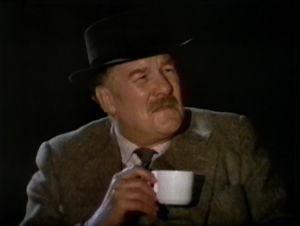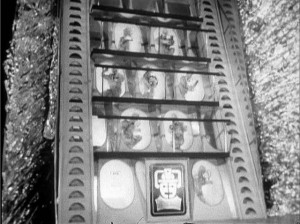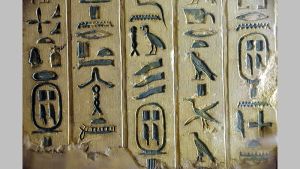So, as I mentioned, I was away from the computer this past weekend because I was attending the Monstrous Antiquities conference at UCL. It was the business. Over the next few days I’ll be posting about the talks that happened there. You can see the Storified version of the tweets that people (including me) put out during the conference here.
So the first night, Friday, saw two papers: the first was on Druids, Deities and Daemons: Archaeological Horrors in Doctor Who, and it was by conference organiser John J. Johnston.
There’s quite a lot of archaeology in Doctor Who, from Tomb of the Cybermen to The Daemons and so on. I think my personal favourite is the archaeologist from the Daemons, who plays the skeptic part with such obvious contempt that you can’t help but like him. There’s a great part where the news presenter asks him “professor, can you explain (such-and-such)” and he just goes “no.”

As an aside, since occultism was going to be coming up all weekend, I think it’s interesting to note that the Master’s chant in The Daemons sounds to me like a variant on an honest-to-goodness Wiccan chant: Eko Eko Azarak.
As a pretty die-hard Doctor Who guy, I was familiar with most of the stories and themes covered in the talk, which was more of an overview of the subject. It introduced a couple of key things that were going to come up. For starters, it hit the whole alien-astronauts thing, which was a huge thing in Doctor Who from the 70s on. Secondly, I think it anticipated a key question that would come up on Saturday: why are archaeologists usually portrayed in an unfavourable light in Doctor Who? If they’re not just releasing evil on the world and getting killed, they’re actual bad guys. This, Johnston suggests, is probably because Doctor Who messes with the usual structure of heroes in an archaeological horror story. You usually have the dumb and/or bad archaeologist who releases the horror, and then a good one who saves the day. But of course, in a Doctor Who story, it’s the Doctor and his companions who fill the role of the heroic archaeologist, leaving only the bad one. We’re going to see this come up again.

Fringe archaeology and popular culture go hand in hand — Von Daniken is a big influence on Doctor Who. I guess it makes sense for a show which combines history and sci-fi.
Next up was a talk by Jean-Marcel Humbert: it was about the portrayal of mummies in childrens’ books, and it was very, very comprehensive. I don’t actually feel like I have that much to say about this one — it was very visual, with examples from dozens or probably even hundreds of books about mummies. On a purely professional level, I think what I admire most was that he wasn’t either extemporising from his slides nor clicking through them to go with his paper. He just had his presentation timed so exactly that the slide show and the reading went together.
After that, hey for the reception at the Petrie Museum. Wine cups were crushed as though they were the skulls of our enemies. I had been feeling a little unsure of myself, socially, since I’m not very good at meeting people, but with a buzz on and some presentations to talk about it was all good.
On a personal note, I was off to the leaving party of a friend, but I decided to stop in on the way at, you guessed it, Treadwell’s Books. A little more wine, some good chats, books, maybe a little occultism. Then finally to Chiswick for the remaining party.
By the end of Friday I knew I was in for an exceptional weekend: my brain was humming and my feet hurt like hell. Saturday would be more of the same.

[…] Dr Who and computer games more or less in its opening moments, the first written up fabulously here et seq.). Not really, of course. RealSim’s 3D virtual model of seventeenth-century Galway designed […]
[…] Dr Who and computer games more or less in its opening moments, the first written up fabulously here et seq.). Not really, of course. RealSim’s 3D virtual model of seventeenth-century Galway designed […]